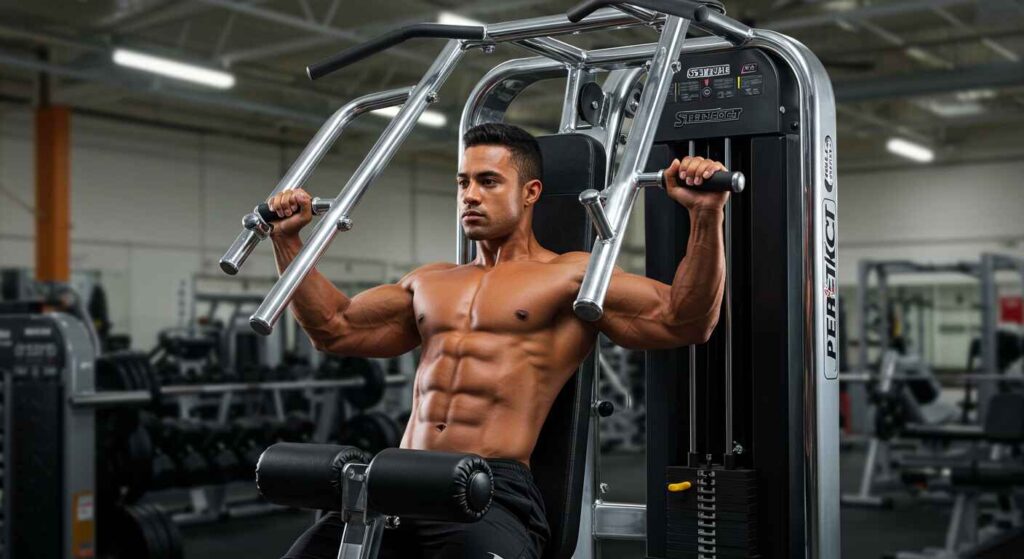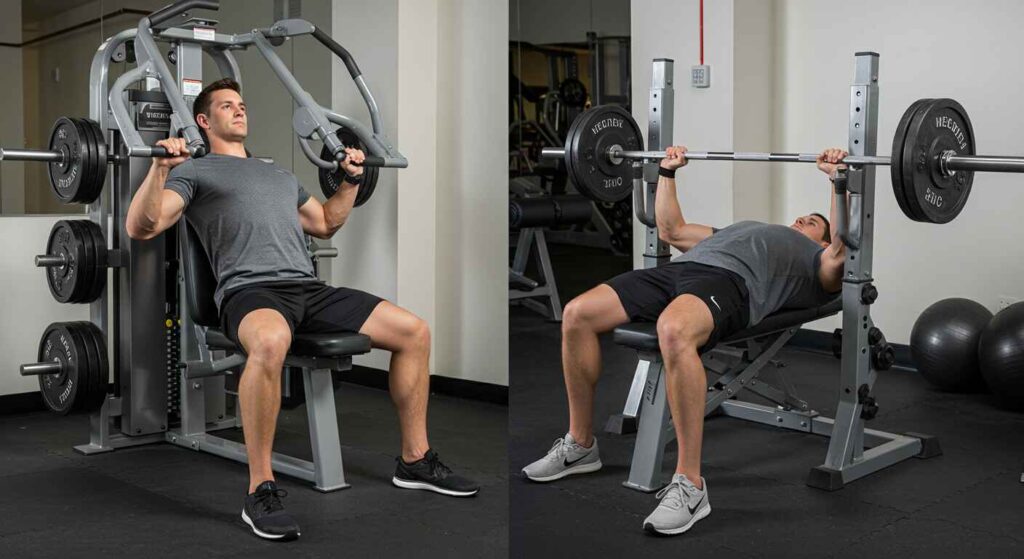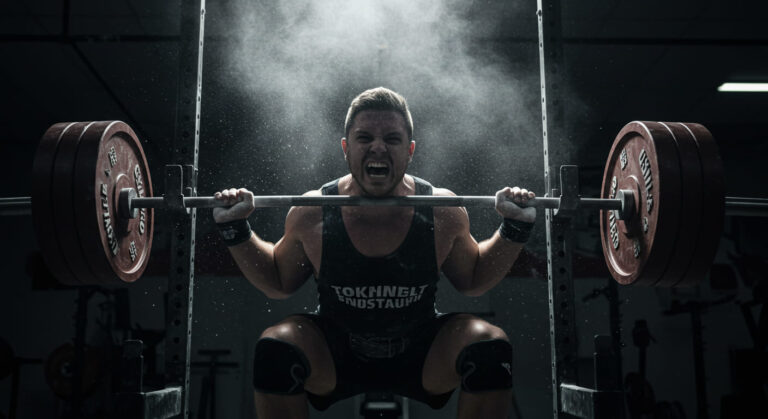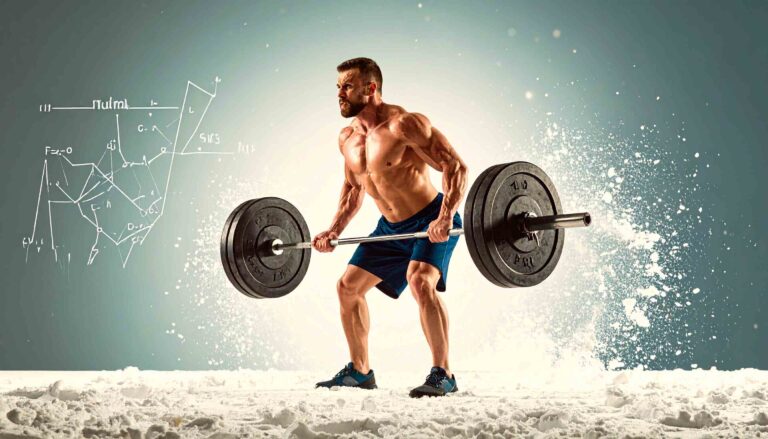Welcome to the ultimate guide to mastering the chest press machine. Whether you’re a first-time gym-goer or a seasoned weightlifter aiming for new strength gains, this piece of exercise equipment is a cornerstone of any effective upper body workout. It offers a controlled, safe, and efficient way to target your pectoral muscles, paving the path to significant muscle growth and enhanced upper body strength.
This comprehensive article will explore everything you need to know. We’ll break down the mechanics of the machine, guide you through executing each press with proper form, and compare it to free weight alternatives. Get ready to transform your chest day and achieve your fitness goals.
Understanding the Chest Press Machine
Before you start pressing, it’s crucial to understand what this machine is and how it functions. Unlike free weights that require more stabilization, the chest press machine guides your movement, making it an excellent tool for both beginners and advanced lifters.
What is a Chest Press Machine?
A chest press machine is a piece of strength training equipment designed to isolate and develop the pectoral muscles. Users typically sit upright or on a slight incline and push handles forward against resistance provided by a weight stack or loaded plates. This guided motion helps minimize the risk of injury while ensuring the chest muscles do the majority of the work.
Types of Chest Press Machines
While the fundamental movement is the same, you’ll encounter a few different variations at the gym.
- Seated Chest Press: This is the most common type, where you sit upright with your back firmly against a pad. It’s a fantastic all-around chest builder.
- Incline Chest Press Machine: This version positions you at an upward angle, shifting the focus to the upper portion of the pectoral muscles and the front delts.
- Plate Loaded Chest Press Machine: Instead of a pin-loaded weight stack, this heavy-duty machine requires you to add weight plates manually. It often allows for a more natural range of motion and is a favorite among those who lift heavy. Brands like Hammer Strength are famous for this design.
What is the primary benefit of a machine press?
The primary benefit of a machine press is muscle isolation. The guided movement path significantly reduces the need for stabilizer muscles to be engaged, allowing you to focus all your effort on contracting the target muscle group—in this case, the pecs. This controlled environment is also excellent for safely applying the principle of progressive overload.
The Anatomy of a Perfect Chest Press

To get the most out of this exercise and prevent injury, mastering the movement is key. It all starts with understanding which muscles you are targeting.
Primary Muscles Worked
The main target of the chest press is, unsurprisingly, the chest.
- Pectoral Muscles: This includes both the large pectoralis major and the smaller pectoralis minor. The machine is highly effective for overall chest development.
- Anterior Deltoids: Your front shoulder muscles, or front delts, act as secondary movers in the press. An incline press will increase their activation.
- Triceps Brachii: Located on the back of your upper arm, the triceps are essential for extending your elbows to complete the pressing movement.
Step-by-Step Guide to Proper Form
Executing the machine chest press with good form is non-negotiable. It ensures maximum muscle activation and minimizes stress on your joints.
- Adjust the Seat: Your first step is to set the seat height. When you sit down, the handles should align with the middle of your chest. Your feet should be flat on the floor, and your back pressed firmly against the pad.
- Select the Right Weight: If you’re new to the machine, start with a light or moderate weight to get a feel for the movement. You should be able to complete 10-12 repetitions without compromising your form. It’s not about how much weight you can move, but how well you move it.
- Establish Your Starting Position: Grasp the handles with a full grip, slightly wider than shoulder width. Your elbows should be bent at a 90-degree angle and slightly below your shoulders. Pull your shoulder blades back and down, puffing your chest out slightly. This protects your rotator cuff and ensures your chest does the work.
- The Pressing Phase: Exhale as you press the handles forward in a smooth, controlled manner. Focus on squeezing your chest muscles together. Extend your arms fully but avoid locking out your elbows at the peak of the movement to keep tension on the pecs.
- The Return Phase: Inhale as you slowly bring the handles back to the starting position. Do not let the weight stack slam. Controlling the negative (eccentric) part of the repetition is crucial for muscle growth.
- Maintain Posture: Throughout the entire range of motion, keep your head, back, and hips in contact with the machine. Your rib cage should remain stable, and you should avoid arching your lower back excessively.
Know your true strength. Use our free and accurate 1RM Calculator to find your numbers instantly.
How do I know if my form is correct on the chest press machine?
To ensure proper form, focus on three key checkpoints:
- The handles are at chest level, not shoulder level.
- Your shoulder blades are retracted (pulled back and down).
- You are moving the weight in a controlled manner, feeling the contraction primarily in your pectoral muscles, not your front shoulder. If you feel pain or pinching in your shoulder joint, your form likely needs adjustment.
Chest Press Machine vs. Free Weights

A common debate in any weight training circle is the battle between machines and free weights. Both have their place in a well-rounded fitness plan. Let’s compare the machine bench press to its free-weight counterparts.
Chest Press Machine vs. Barbell Bench Press
The barbell bench press is often called the king of chest exercises. It’s a compound movement that recruits a significant number of stabilizer muscles, leading to greater overall strength development. However, the chest press machine offers distinct advantages.
| Feature | Chest Press Machine | Barbell Bench Press |
| Stability | High | Low |
| Safety | High (no spotter needed) | Lower (spotter recommended) |
| Muscle Isolation | High | Moderate |
| Learning Curve | Low | High |
| Risk of Injury | Low | Higher |
The machine is generally safer, making it ideal for beginners or those training alone. The barbell press has a higher potential for strength and power development but comes with a greater injury risk if performed incorrectly.
Chest Press Machine vs. Dumbbell Bench Press
The dumbbell bench press is another excellent free-weight option. It allows each arm to work independently, which can help correct muscle imbalances and provides a greater range of motion than a barbell.
- Stability: The dumbbell variation requires even more stabilization than the barbell, engaging smaller muscles around the shoulder joint.
- Range of Motion: Dumbbells allow your hands to move in a more natural arc, which can lead to a deeper stretch and contraction in the pecs.
- Versatility: You can easily switch between a standard press, an incline dumbbell press, or even a decline press with just a pair of dumbbells and an adjustable bench.
The chest press machine still wins on sheer safety and ease of use, making it perfect for targeting the pecs with heavy weight without worrying about balance.
Integrating the Chest Press Machine into Your Workout
Knowing how to use the machine is one thing; knowing when and how to program it is another. Here’s how to make it a productive part of your routine.
A Sample Chest Workout Routine
Here is a sample chest day workout that effectively incorporates the chest press machine for comprehensive chest development. This upper body workout also hits supporting muscle groups.
- Incline Bench Press (Barbell or Dumbbell): 3 sets of 8-12 reps
- Focuses on the upper chest.
- Seated Chest Press Machine: 3 sets of 10-15 reps
- Targets the mid-chest with a focus on hypertrophy.
- Chest Fly Machine or Pec Deck Machine: 3 sets of 12-15 reps
- Isolates the pecs for a deep squeeze and muscle activation.
- Dips (or Assisted Dip Machine): 3 sets to failure
- Works the lower chest and triceps.
- Overhead Press (Shoulder Press): 3 sets of 10-12 reps
- Targets the anterior deltoids and overall shoulder development.
- Lateral Raise Machine: 3 sets of 15-20 reps
- Isolates the side deltoids for broader shoulders.
Progressive Overload: The Key to Muscle Growth
To continue making strength gains and building muscle, you must consistently challenge your body. This is the principle of progressive overload. On the chest press machine, this can be achieved in several ways:
- Increase the Weight: The most straightforward method. Once you can comfortably complete your target reps, add more weight.
- Increase the Reps: Aim to do more repetitions with the same weight.
- Increase the Sets: Add another set to your workout.
- Decrease Rest Time: Reduce the time you rest between sets to increase workout intensity.
Stuck in a plateau? Take the guesswork out of your training and plan your path to consistent gains with our free Progressive Overload Planner.
Advanced Techniques and Variations
Once you’ve mastered the basics, you can use advanced techniques to spur new muscle growth.
Independent Converging Arms
Some of the best weight machines, like those from Hammer Strength, feature independent converging arms. This means each arm moves separately and comes together (converges) at the peak of the press. This mimics the natural movement of a dumbbell press, offering a superior contraction and helping to address strength imbalances between the left and right sides of your body.
Alternative Pressing Movements
While the standard seated chest press is fantastic, variety is key for a well-developed physique.
- Incline Press: As mentioned, the incline chest press machine is perfect for targeting the clavicular head of the pectoralis major (the upper chest).
- Decline Press: Though less common in machine form, some gyms have a decline press machine. This targets the lower chest. A Decline Bench with dumbbells is a more common substitute.
- Cable Chest Press: Using a cable crossover station for a cable chest press offers constant tension throughout the entire movement, something that both free weights and standard machines lack.
Can you build a big chest with only a chest press machine?
Yes, you can certainly build a significant amount of chest muscle using only a chest workout machine. By utilizing different variations (incline, seated) and applying the principles of progressive overload, you can achieve substantial chest development. However, for a truly well-rounded physique, incorporating free weights like dumbbells and barbells is often recommended to improve stabilizer strength and overall functional fitness.
Finding the Right Equipment
Whether you’re setting up a home gym or choosing a commercial facility, the quality of the exercise equipment matters.
What to Look for in a Chest Press Machine
If you’re in the market to purchase a machine, perhaps for a Shoulder Home Gym Equipment setup, consider the following:
- Adjustability: Ensure the seat and handles can be adjusted to fit your body and arm length.
- Build Quality: Look for a heavy-duty steel frame that feels stable and secure.
- Smoothness of Motion: The movement should be fluid, not jerky. This is crucial for both effectiveness and safety.
- Weight Stack: Check if the weight stack offers enough resistance for your long-term fitness goals.
- Customer Service & Support: If buying new, research the brand’s reputation for customer service and customer support. Look for offers like free shipping.
Many high-quality machines can be found across the United States from reputable manufacturers.
Common Mistakes to Avoid

Even on a guided machine, errors can happen. Avoiding these common pitfalls will maximize your results and keep you safe.
- Using Too Much Weight: Ego lifting is a fast track to injury. Loading up too much weight compromises form, reduces the range of motion, and shifts the stress to your joints and front deltoids instead of your chest.
- Incorrect Seat Height: Setting the seat too high or too low is a common mistake. If the handles are at shoulder level, you’re performing more of a shoulder exercise and putting your rotator cuff at risk. The handles must align with your mid-chest.
- Flaring Your Elbows: Allowing your elbows to flare out to the sides at a 90-degree angle from your torso creates immense strain on the shoulder joint. Keep them tucked in slightly (around a 75-degree angle).
- Partial Reps: To fully stimulate the pectoral muscles, you need to use a full range of motion. Press all the way out (without locking the elbows) and control the weight all the way back until you feel a good stretch in your chest.
- Lifting Your Hips: Lifting your hips off the seat to press the weight is a form of cheating. It reduces the work your chest has to do and can strain your lower back. Keep your glutes and back planted firmly in the seated position.
Frequently Asked Questions (FAQs)
Let’s address some more related questions about the chest press machine.
Is the chest press machine as good as bench press?
The chest press machine and the regular bench press are both excellent exercises with different strengths. The bench press is superior for building raw, functional strength as it engages more stabilizer muscles. The machine is better for isolating the chest, ensuring safety when training alone, and is often easier for beginners to learn. The best approach for many is to include both in their weight training program.
What other machines complement a chest workout?
To build a balanced upper body, you should pair chest work with back exercises. A Lat Pulldown machine is an excellent choice for targeting the latissimus dorsi. For other body parts, a Leg Extension or Leg Curl machine targets the quads and hamstrings, respectively, while a Squat Rack or Power Rack is essential for lower body compound movements. A Rear Deltoid machine can help balance out the shoulder work from pressing movements.
Can I use resistance bands with a chest press machine?
While not a standard practice, you could theoretically anchor resistance bands to a plate-loaded chest press machine to add accommodating resistance. However, a simpler and more effective way to use bands for chest work is to perform banded push-ups or a standing band press.
Conclusion: Press On with Confidence
The chest press machine is more than just a simple piece of gym equipment; it is a powerful tool in your arsenal for building a strong, well-defined chest. Its guided motion provides a safe and effective way to apply targeted stress to your pectoral muscles, making it a cornerstone of any successful strength training regimen.
By focusing on good form, embracing progressive overload, and integrating the machine into a balanced upper body workout, you set yourself on a direct path to achieving your goals. Whether you favor the seated chest press for overall development or the incline chest press machine to build that upper shelf, consistency and proper technique are your keys to success. Move beyond just going through the motions and start pressing with purpose. Your chest will thank you for it.






